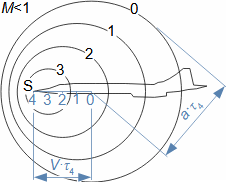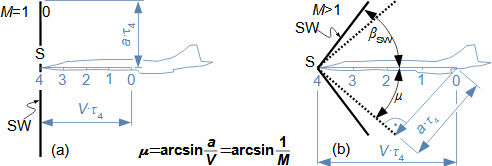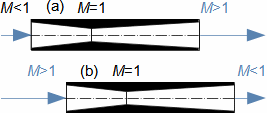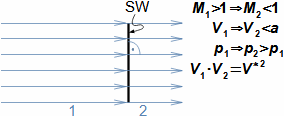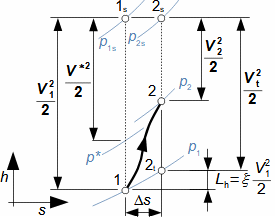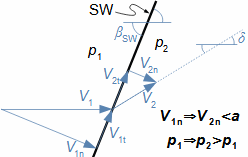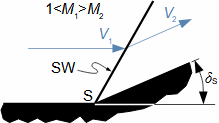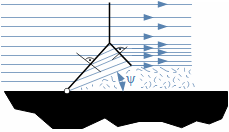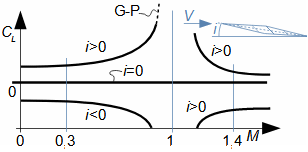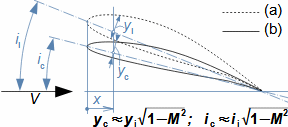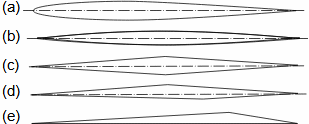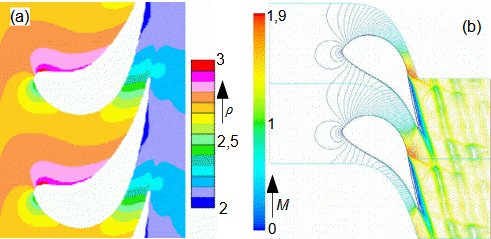Basic concepts in high velocity flowMach numberSpeed of soundCompressible fluidMach number is defined as the ratio of the velocity of a flow to the velocity of propagation of sound in a fluid (speed of sound), see Equation 1. If the Mach number reaches a value at which the fluid can no longer be considered incompressible for a given application, then such a velocity is considered high in aerodynamics. This is because compressibility causes effects in the flow that do not occur in the flow of incompressible fluids or low Mach numbers.  1: Definition of Mach number and speed of sound a [m·s-1] speed of sound in continuum under investigation; M [Mach] Mach number; p [Pa] pressure; r [J·kg-1·K-1] specific gas constant; T [K] absolute gas temperature (static temperature); V [m·s-1] velocity of body or flow; ρ [kg·m-3] density; κ [1] heat capacity ratio. The derivation of the equation for the speed of sound is shown in Appendix 3.Subsonic flowTransonic flowSonic flowSupersonic flowIf the Mach number is less than one (M<1) in the surroundings of the fluid point under investigation, then we speak of subsonic flows. If the value of Mach number in the surroundings of the fluid point under investigation is around 1, specifically in the range 0,8<M<1,3, then we speak of transonic flow - specifically when the Mach number is exactly 1 (M=1) we speak of sonic flow. If the value of Mach number is above 1 (M>1) in the whole surroundings of the fluid point under investigation, then we speak of supersonic flow. Critical Mach numberSometimes we come across the term critical Mach number, this number is related to some well-defined point within the fluid volume under investigation, and it is the Mach number at which the speed of sound or supersonic velocity is reached somewhere in the volume (for example, when the fluid is flowing around some bodies inside). |

